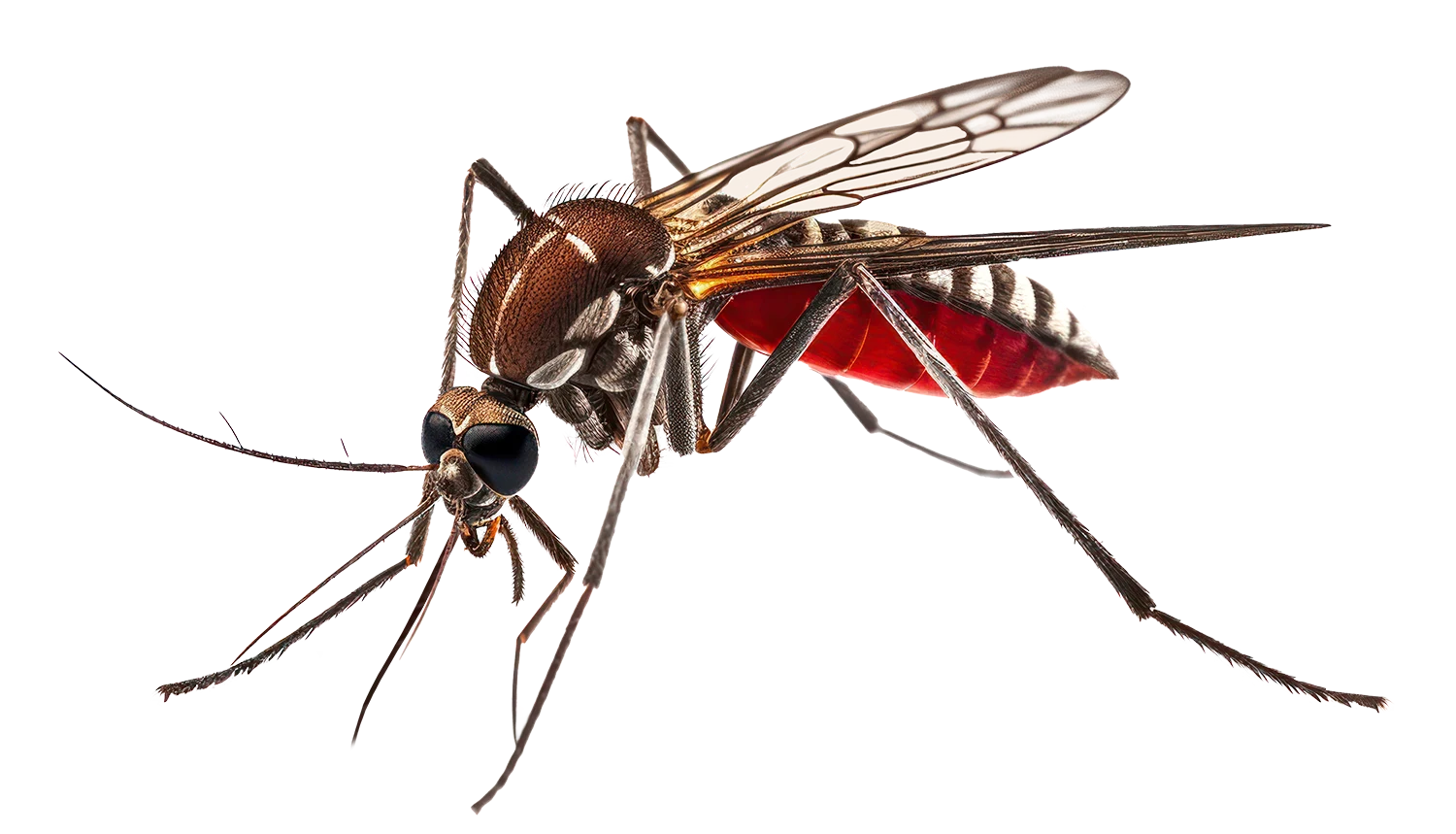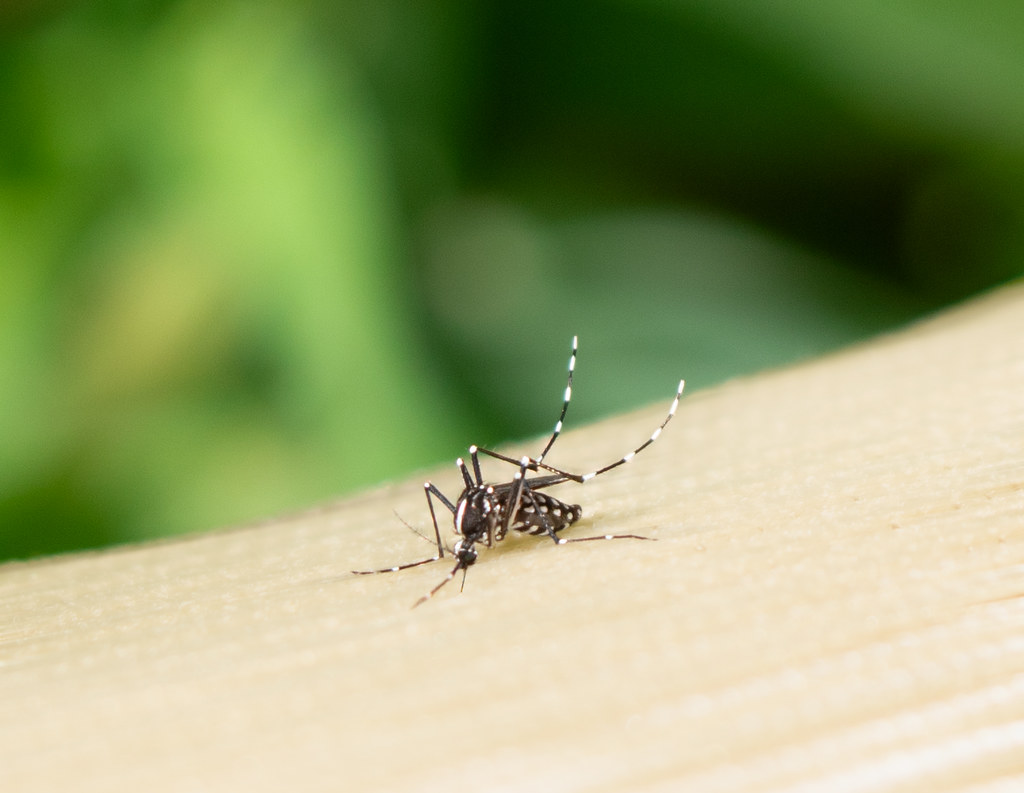
Mosquito
Common Name: Mosquito, Skeeter, Mozzie
Size: 2.5 – 10 mm
Life Span: 2 weeks to 6 months
Mosquitoes are small, flying insects that belong to the family Culicidae. They are characterized by their slender bodies, long legs, and narrow wings covered in tiny scales. A key feature of mosquitoes is their elongated proboscis, which females use to pierce the skin and suck blood. This blood meal is necessary for egg development, while males feed primarily on nectar and plant juices. There are over 3,500 species of mosquitoes worldwide, found mostly in warm, humid environments. Their life cycle consists of four stages: egg, larva, pupa, and adult. The first three stages occur in water, making stagnant water sources crucial for their reproduction. Mosquitoes can lay eggs in as little as a few drops of standing water, such as puddles, flower pots, birdbaths, and clogged drains. Mosquitoes are most active during dawn and dusk, using their keen sense of smell to detect carbon dioxide and body heat from potential hosts. Some species prefer humans, while others target animals like birds, reptiles, and amphibians. Their bites cause itchy welts due to an anticoagulant enzyme in their saliva that prevents blood clotting. Beyond their nuisance factor, mosquitoes are one of the deadliest creatures on Earth due to their role in transmitting diseases. Their ability to adapt to different environments and breed rapidly makes them one of the most persistent and challenging pests to control. Without proper mosquito management, they can pose serious health threats to both humans and animals.
As pest
Mosquitoes are not just irritating pests; they are also major disease carriers, transmitting deadly pathogens to humans and animals. Some of the most well-known mosquito-borne diseases include malaria, dengue fever, chikungunya, Zika virus, West Nile virus, and yellow fever. These illnesses can cause severe symptoms, hospitalization, and even death, particularly in tropical and subtropical regions. When a female mosquito bites, it injects saliva into the host’s bloodstream, which can contain viruses or parasites. Once infected, a person may develop symptoms ranging from mild fever to life-threatening conditions. For example, malaria, caused by Plasmodium parasites, kills hundreds of thousands of people annually. Dengue fever leads to severe flu-like symptoms and, in some cases, internal bleeding. Even in areas where disease transmission is low, mosquito bites cause discomfort, allergic reactions, and skin irritation.

How to control
Effective mosquito control requires a combination of prevention, habitat management, and targeted treatments. Since mosquitoes breed in stagnant water, eliminating standing water sources is the first and most crucial step. Regularly emptying and cleaning birdbaths, gutters, flower pots, and discarded tires can significantly reduce mosquito populations. Physical barriers like window screens, mosquito nets, and protective clothing help prevent bites. Using fans can also deter mosquitoes, as they are weak fliers. Installing mosquito-repelling plants like citronella, lavender, and lemongrass around homes can provide a natural deterrent. Biological control methods include introducing natural predators like mosquito-eating fish (Gambusia affinis) into water bodies. Some areas use bacteria-based larvicides, such as Bacillus thuringiensis israelensis (Bti), to kill mosquito larvae without harming other wildlife. Chemical control involves using insecticides, fogging, and personal repellents containing DEET, picaridin, or oil of lemon eucalyptus. While these methods can provide temporary relief, they should be used responsibly to minimize environmental impact. For large-scale control, community-wide efforts are essential. Public health programs often implement mosquito surveillance, targeted spraying, and breeding-site elimination to reduce infestations. In recent years, genetically modified mosquitoes have been introduced in some regions to reduce disease-carrying populations.

